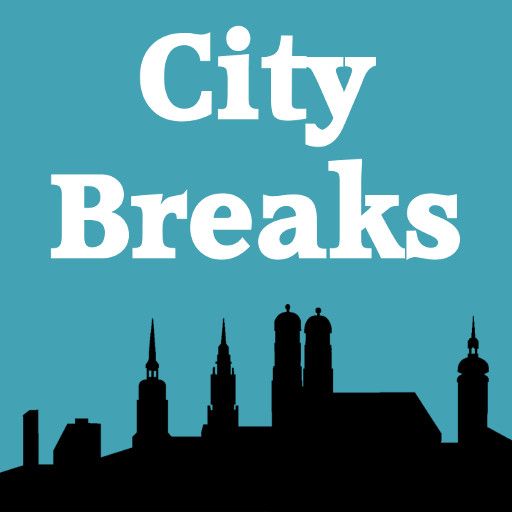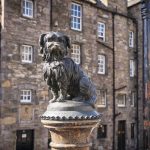Amsterdam’s churches are not always what they seem. One is more of a national memorial, another is an art gallery and concert venue. A third is a museum where you can learn the story of the hidden churches which opened in the 17th century and where worshippers gathered for over 200 years. The key factor is a date – 1578 – when an event occurred which changed everything: the Alteration. This episode explains what happened and then tours half a dozen of the city’s churches and explains what you can expect to find if you visit them today. As ever, there is more detail on the podcast.
amsterdam’s churches: a little history


In the 16th century, as the Protestant Reformation spread through Europe, Amsterdam’s ruling council was closely linked to Catholic, Hapsburg Spain. The Anabaptist riots of 1535 were brutally put down, but 40 years later another coup was attempted and this time the Protestants prevailed. Incredibly, no blood was shed – the rebels, loyal to the Protestant William of Orange, closed off Dam Square, then escorted the 24 members of the City Council away and sent them out of the city in barges. A new City Council was formed – 30 Calvinists and 10 Catholics – and Amsterdam became a Protestant city. As the Dutch writer Geert Mak puts it, ‘the 26th May 1578 is the exact moment when the real Amsterdam was born.’
After the Alteration, as this was known, everything changed. For the next 200 years, Catholics were not allowed to worship publicly, but ‘hidden churches’ such as Our Lord in the Attic, built by combining the upper floors of 3 houses, were permitted. As Deborah Moggach writes of a character in her novel, Tulip Fever, ‘On Sunday, he visits his church and she attends a secret Mass, for her religion is tolerated as long as it is celebrated in private.’ The Dutch national anthem dates from this period, being a popular song in which Willem of Orange, in exile in a German castle, exhorts his people to hold on until he arrives to free them.
the begijnhof


The Begijnhof, a pretty little square dates back to early Catholic Amsterdam when one Lambert le Begue founded it as an almshouse for women who, in return for shelter, ministered to the poor and elderly. After the Alteration it became a Catholic enclave in a now Protestant city. The oldest surviving house dates from 1530 and there are two churches: the Engelse Kerk, originally built for Catholic worship in the 15th century, but taken over by Presbyterians after the Alteration and later becoming ‘the English Church’; and the Begijnhofkapel, one of the ‘hidden’ Catholic churches built afterwards – note the contrast between the plain exterior and the opulent interior.
Cornelia Arens, who died in 1654, chose to be buried under the church path, rather than in the ‘English Church’ as a penance, she said, on behalf of her relatives who had converted to Protestantism. Every year on May 2nd, the anniversary of her death, flowers are placed on her grave.
2 of amsterdam’s churches linked to the alteration


The Oude Kerk, begun in 1306, was ransacked and taken over by the Dutch Reformed Church after the Alteration. It is no longer a church, but rather an art gallery and concert venue – you will need to pay to get in! – but it retains its carved wooden choir stalls, large wooden vaulted ceiling and the largest church bell in the city, dating from 1450. There are some 2.500 gravestones inside, including one for Saskia van Uylenburgh, Rembrandt’s wife.
The Nieuwe Kerk was founded as a Catholic Church in 1408 and this version was built in 1608 by the Dutch Reformed Church. It is no longer a working church, but rather, as an information panel inside explains, ‘a treasure house of medieval mysteries, royal treasures, Catholic devotion and the Dutch Protestant heritage.’ It’s the place where all 7 Dutch monarchs have been inaugurated since 1814, a ceremony which takes place in front of the beautiful brass choir screen. It is the place where the annual National Remembrance Day ceremony takes place and is used for other major events such as graduations and commemorations.
The Nieuwe Kerk, centrally sited on Dam Square, is no longer a place for religious ceremonies but is rather, as it says itself, ‘a large and prestigious space where people can come together’. However, you will still see its altar, side chapels, tombs and stained-glass windows.
2 of amsterdam’s reformist churches


The Westerkerk, opened in 1621, was the first church built by Protestants after the Alteration. It was built to serve the wealthy Protestants who lived nearby, but its plain interior is very different from the Catholic churches it superceded. Rembrandt was buried here in 1669 and although the exact location of his grave is unclear, you will find a plaque stating ‘Here lies buried Rembrandt Harmwensz Van Ryn, born 15 July 1606, died 4 October 1669.’
The Noorderkerk, begun in the 1620s, was built to serve the Amsterdam’s poor, many of whom lived in the nearby Jordaan area. It is built in the shape of a Greek Cross, ie with four arms of equal length, with an altar in the centre and it too has a plain interior. As the writer Geert Mak explains, despite some restoration in the 19th century, it remains a good example of a 17th century Dutch church with ‘something of the private, intimate atmosphere that leaps out at you from the paintings of Johannes Vermeer and Pieter de Hoogh’. It is still used for Dutch Reformed Church services, based on the 1637 translation of the bible.
In the square outside there’s a lively market which takes place on Mondays and Saturdays.
amsterdam’s Catholic Churches


By the 1880s, it was finally accepted that Catholics, who had been worshipping in hidden churches ever since the Alteration, should be able to profess their faith openly in Amsterdam and so St Nicholas was built. Its neo-baroque style – a high central dome around the pulpit underneath and ornate interior decorations – mark it out as very different from the Protestant churches. Outside, you will find a statue of St Nicholas, patron saint of the city and inside is a relic, said to be a fragment of his rib.
Visit Ons Lieve Heer op Solder, or Our Lord in the Attic in English, to see one of the hidden churches, built for Catholic worship after the Alteration. A Catholic merchant, Jan Hartmann, bought three adjoining canal-side houses and combined their attics to create a church which attracted congregations right up until 1887 when St Nicholas was built. Today, it is a museum (although mass is sometimes celebrated) where you can learn the story by visiting both the house, restored to its 17th century state and the church, left as it was in the 19th century when the congregation moved out to their brand new church, St Nicholas.
Tour the house, where you can see much evidence of Amsterdam life in the 17th century, then climb the wooden staircase up to the attic church, just as Catholics did after the Alteration. Here you will find a large and beautiful main room, fitted with wooden pews and an altar, plus various side rooms, a confessional installed in 1740 and the rooms set aside for the priest to live in. Of all the churches to visit in the city, it is this one which best tells the story of its religious history and worship. It is unique to Amsterdam and helps put all the others into context.
Listen to the podcast
reading suggestions
Amsterdam A Brief Life of the City by Geert Mak
Amsterdam A History of the World’s Most Liberal City by Russell Shorto
The Invention of Amsterdam A History of the World’s Greatest City in 10 Walks by Ben Coates
links for this post
The Begijnhof
The Oude Kerk
The Nieuwe Kerk
The Westerkerk
The Noorderkerk
St Nicholas
Our Lord in the Attic
Previous Episode The Canals of Amsterdam
Next Episode Amsterdam’s Golden Age
Last Updated on April 23, 2025 by Marian Jones





